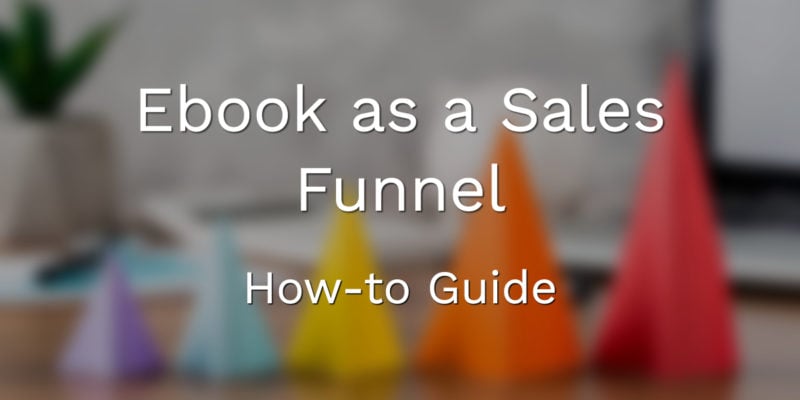Let’s talk about something that might seem a bit overlooked but can seriously boost your marketing game: ebooks. I know, I know – you might be thinking, “Ebooks? Aren’t those just glorified PDFs?” But stick with me, because we’re about to dive into how these digital assets can transform your sales funnel from top to bottom.
What’s a Sales Funnel Anyway?
Before we jump in, let’s break down what we mean by a sales funnel. It’s essentially the journey your potential customers take, from first discovering your brand to finally making a purchase. Think of it like nurturing a relationship – from that initial spark of interest to a long-term commitment.
There are three main stages:
- Awareness: This is when people first come across your brand. Maybe they found you through a Google search or saw a colleague mention you on LinkedIn.
- Consideration: Now they’re intrigued. They’re exploring your website, checking out your offerings, and wondering if you’re the solution to their problems.
- Decision: This is the moment of truth. They’re ready to commit (or not). Your job is to make sure they choose you over the competition.
Now, here’s where ebooks come into play. They’re not just static content sitting on your website. Instead, think of them as dynamic tools, working behind the scenes at every stage of your funnel to guide people towards that final “yes.”
Ebooks at the Top of the Funnel
At the top of your funnel, your goal is simple: get noticed. Your ebooks here should be like that friend who always has the best stories at parties – interesting, approachable, and leaving people wanting more.
What should these ebooks look like? Here are some ideas to get your creative juices flowing:
- “The Ultimate Guide to [Your Industry]: What’s Hot, What’s Not, and What’s Next”
- “[Your Industry] 101: Everything You Wish You Knew But Were Too Afraid to Ask”
- “5 Mind-Blowing Trends Reshaping [Your Industry] (Number 3 Will Surprise You!)”
The key here is to cast a wide net. You’re not trying to make a sale just yet. You’re introducing yourself to folks who might not be ready to buy but are curious about what you do.
Pro tip: Make these ebooks visually stunning. Use infographics, charts, or illustrations to break up the text. People are more likely to read and share content that looks good. It’s like dressing up for a first date – first impressions matter!
Middle of the Funnel
Alright, now we’re getting to the juicy part. People here are actively looking for solutions. They’re comparing options. Your job? Show them you know your stuff better than anyone else.
Your middle-of-funnel ebooks should tackle specific problems head-on. No beating around the bush. Show different ways to solve these problems, including your approach, but be fair about alternatives too.
Some ideas to get you started:
- “The Ultimate Showdown: [Your Product/Service] vs. the Competition”
- “5 Sneaky Ways [Common Problem] Is Costing You Money (And How to Fix It)”
- “Case Study Bonanza: How Real Companies Crushed [Specific Challenge] and Boosted Revenue”
This is your chance to shine. Show off your expertise, but do it in a way that’s genuinely helpful. You want people to finish reading and think, “Wow, these folks really know their stuff!”
Remember: Don’t just talk about features. Focus on benefits. How will solving this problem make your reader’s life better? Will it save them time? Make them look like a rock star to their boss? Help them impress their spouse? Paint that picture for them.
Bottom of the Funnel
You’re in the home stretch now. People at the bottom of your funnel are this close to making a decision. Your ebooks here need to give them that final nudge.
Bottom-of-funnel ebooks should focus on what makes your product or service special. What’s your secret sauce? Why should they choose you over the other guys?
Some ideas to get you started:
- “The Inside Scoop on [Your Product/Service]: Features, Benefits, and Real Results”
- “ROI Deep Dive: The True Value of Investing in [Your Solution] (With Real Numbers!)”
- “Customer Success Stories: See What [Your Company] Can Do for You (Warning: May Cause Extreme FOMO)”
These ebooks are your closers. They should make people feel confident about choosing your solution. Use concrete examples, hard data, and compelling storytelling to make your case.
Pro tip: Include a strong call-to-action (CTA) at the end. Make it crystal clear what you want readers to do next, whether that’s booking a demo, starting a free trial, or making a purchase. Don’t leave them hanging!
How to Create Ebooks That Actually Work

Now that we’ve covered the what and why, let’s talk about the how. How do you create ebooks that people actually want to read?
Top of Funnel – Be the Life of the Party
For those top-of-funnel ebooks, think broad and helpful. You’re not trying to close a sale here, you’re trying to start a conversation.
- Pick topics that lots of people in your industry care about. Look at what’s trending. What questions keep popping up in forums or social media? Those are goldmines for ebook topics.
- Write like you’re talking to a friend. Keep it casual and engaging. Use “you” and “your” a lot. Ask questions. Use analogies and examples to make complex ideas simple.
- Keep it visually appealing. Break up your text with subheadings, bullet points, and images. Use charts or infographics to illustrate key points. Make it easy on the eyes.
- Aim for about 15-30 pages. You want people to actually read it, not feel overwhelmed. Quality over quantity, always.
Pro tip: End each chapter with a quick summary or key takeaways. It helps reinforce the main points and makes your ebook more skimmable. Because let’s face it, some people will skim. Make it easy for them to get value even if they don’t read every word.
Middle of Funnel – Show You’re the Expert
This is where you get to flex those expertise muscles. You’re not just sharing general knowledge anymore, you’re diving deep into specific problems and solutions.
- Figure out what specific problems your target audience faces. Do some digging. Look at customer support tickets, sales call notes, or industry forums. What issues come up again and again?
- Give step-by-step advice on how to solve these problems. Be specific. Don’t just say “improve your workflow.” Break it down into actionable steps. The more detailed, the better.
- Back up your points with real numbers and research. Use stats, studies, or your own data to support your claims. It adds credibility and shows you’re not just making stuff up.
- Tell stories or give examples to make your points clear. People remember stories better than dry facts. Share case studies or anecdotes that illustrate your points.
- Aim for about 30-50 pages to really dig into the topic. This is where you can go deeper than your top-of-funnel content. Don’t be afraid to get into the nitty-gritty details.
Pro tip: Include checklists, worksheets, or templates that readers can use to apply your advice. It makes your ebook more interactive and valuable. Plus, it gives them a reason to keep coming back to it (and thinking about your brand).
Bottom of Funnel – Make Your Case
This is where you make your pitch. But remember, you’re not just selling a product, you’re selling a solution to their problems.
- Clearly explain what makes your product or service special. What’s your unique selling proposition? Why should someone choose you over the competition? Be specific and clear.
- Include detailed info about your product’s features and benefits. Don’t just list features. Explain how each feature translates into a benefit for the user. How will it make their life easier or better?
- Share real stories from happy customers. Nothing sells like social proof. Include testimonials, case studies, or success stories. Use real numbers and results whenever possible.
- Show how you compare to other options out there. Be honest about this. If a competitor is better in some areas, acknowledge it. Then show why your overall package is still the best choice.
- Keep it to about 20-30 pages, packed with persuasive info. You want to be thorough, but not overwhelming. Focus on your strongest selling points.
Pro tip: Include a FAQ section addressing common objections or concerns. It shows you understand your customers and helps overcome last-minute doubts. Plus, it makes you look more transparent and trustworthy.
Ways to Capture Leads with Your Ebooks
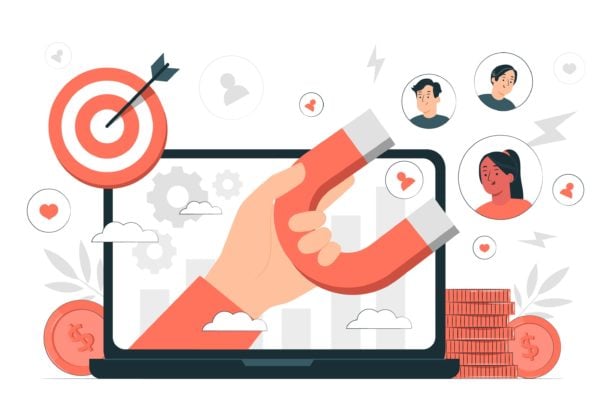
Alright, you’ve created these awesome ebooks. Now let’s talk about how to use them to capture leads. After all, that’s a big part of why we’re doing this, right?
Create a Landing Page That Converts
Each ebook deserves its own special webpage.
This page has one job: to get people to download your ebook.
Here’s how to make it work:
- Use a headline that grabs attention and shows the ebook’s value. What problem does it solve? What will readers learn? Don’t be afraid to be bold here. Something like “Discover the 5 Hidden Tactics That Doubled Our Revenue” is way more intriguing than “Marketing Strategy Guide”.
- Make it super clear how to download the ebook. Use a big, obvious button. Make it stand out visually. Play around with colors, size, and placement. Maybe a bright orange button that says “Get Your Free Guide Now” works better than a subtle blue “Download” link.
- Show off a bit. Mention how many people have downloaded it or what they’re saying about it. This social proof can be really persuasive. You could say something like “Join over 10,000 marketers who’ve boosted their skills with this guide” or include a quote from a satisfied reader.
- Include a sneak peek of what’s inside. Maybe it’s a table of contents, or a particularly juicy excerpt. Give them a taste of what they’re getting.
- Keep the page clean and focused. Remove any distractions that might take away from the download button. No need for your full website navigation here.
Collect Emails
Your form is crucial here. You want to get enough info to be useful, but not so much that it scares people away.
- Keep your form simple. Just ask for name and email. You can always get more info later. Remember, every extra field you add will reduce your conversion rate.
- Try offering a “quick download” option using social media login. Some people prefer this to filling out a form. It’s faster and feels more secure to some users.
- Test different types of forms. Maybe a multi-step form works better for your audience. Or maybe a super simple one-field form is the way to go. Test and see what works best. You might be surprised – sometimes asking for more info in a multi-step form actually increases conversions because it feels more engaging.
- Consider the placement of your form. Does it work better at the top of the page, or after you’ve explained the value of the ebook?
- Use clear, benefit-focused labels on your form fields and submit button. Instead of “Submit”, try “Get My Free Ebook”.
To Gate or Not to Gate?
“Gating” means putting your content behind a form. It’s a trade-off between getting more leads and reaching a wider audience.
- Put your best, most detailed ebooks behind a form to capture leads. These are usually your middle and bottom-of-funnel ebooks. Think comprehensive guides, in-depth case studies, or exclusive research reports.
- Offer some free, ungated content to build trust. This could be your top-of-funnel ebooks or blog posts. It gives people a taste of your expertise without asking for anything in return.
- Try different approaches. Maybe gate half the ebook and offer the rest for free. Or offer the full ebook for free but gate an extra bonus chapter. Get creative and see what works for your audience. You could even try a “soft” gate where you ask for an email, but don’t require it.
- Consider your audience and industry norms. In some fields, people expect high-value content to be gated. In others, they might be put off by it.
- Think about the long-term relationship. Sometimes, it’s worth sacrificing a lead to build goodwill and trust with your audience.
Pro tip: Use exit-intent popups. These appear when someone’s about to leave your page. Offer them a chance to download your ebook before they go. It can be a great way to catch leads you might otherwise lose.
Nurturing Your Leads (Without Being a Pest)
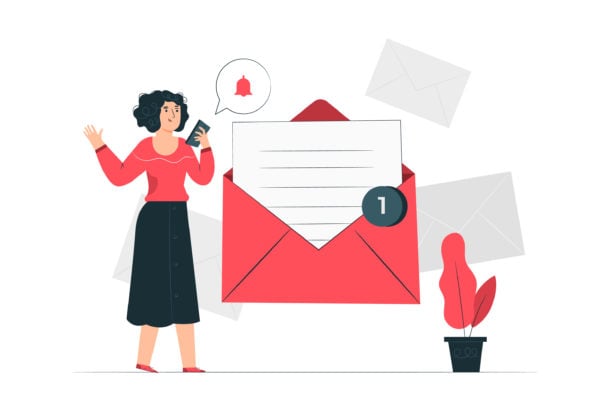
You’ve got leads from your ebooks. Awesome! Now what? It’s time to nurture those leads and keep them interested in what you have to offer.
Keep the Conversation Going
Don’t just send the ebook and disappear. Keep the engagement going with follow-up emails.
- Send a welcome email with the download link and other helpful resources. Make them feel like they’ve joined an exclusive club. You could say something like, “Welcome to the inner circle! Here’s your ebook, plus a few other goodies I thought you’d like.” Include links to related blog posts or videos.
- Follow up with emails highlighting key points from the ebook. Break it down into bite-sized pieces they can easily digest. For example, if your ebook has 5 main tips, send 5 emails, each focusing on one tip. Add some extra insight or a real-world example in each email.
- Share related content or offer a free consultation. Show them you’re not just interested in making a sale, but in genuinely helping them. You could say, “Loved the ebook? Let’s chat about how to apply these ideas to your business. Book a free 15-minute call here.”
- Ask for feedback on the ebook. What did they find most useful? What questions do they still have? This shows you value their opinion and gives you ideas for future content.
- Consider creating a mini-email course based on your ebook. Drip out the content over a week or two to keep them engaged.
Get Personal
Use the data you have to make your emails more relevant and engaging.
- Keep track of which parts of the ebook people spend the most time on. This tells you what they’re most interested in. If you’re using a PDF, you can use tools like Adobe Analytics to see which pages get the most attention.
- Send targeted content or offers related to those interests. If someone spends a lot of time on a particular chapter, send them more info on that topic. For example, “I noticed you spent some time on the chapter about social media marketing. Here’s an exclusive video where I dive deeper into Instagram strategies.”
- Use dynamic content in your emails to speak directly to each reader’s preferences. This can be as simple as changing the subject line or as complex as swapping out entire sections based on the reader’s behavior. You could have different email versions for beginners, intermediates, and advanced readers.
- Pay attention to when people are opening your emails. Are they early birds or night owls? Adjust your sending times accordingly.
- Use their name and company name (if you have it) in emails, but don’t overdo it. A simple “Hey [Name], thought you’d find this interesting…” can work wonders.
Group Your Readers
Not all leads are the same. Treat them differently based on what they care about.
- Create groups based on the types of ebooks people download. Someone who downloads a beginner’s guide needs different content than someone who downloads an advanced technical guide. You might have groups like “SEO Newbies,” “Content Marketing Pros,” or “Social Media Enthusiasts.”
- Make specific campaigns for each group. Tailor your messaging to where they are in their journey. For the “SEO Newbies,” you might focus on foundational concepts and quick wins. For the “Content Marketing Pros,” you could dive into advanced strategies and industry trends.
- Learn more about your leads by offering them more relevant ebooks over time. This helps you build a more complete picture of each lead’s interests and needs. You could say, “Enjoyed our beginner’s guide to SEO? Here’s an advanced guide on technical SEO you might like.”
- Use surveys or quizzes to gather more info about your leads. Make it fun and valuable for them. “Take our 2-minute ‘What’s Your Marketing Superpower?’ quiz and get personalized recommendations!”
- Consider creating buyer personas based on your groups. This can help you tailor your content and offers even more precisely.
Pro tip: Use automation, but don’t forget the human touch. Set up automated email sequences, but be ready to jump in personally when someone shows high engagement or asks a question.
Turning Ebook Readers into Customers
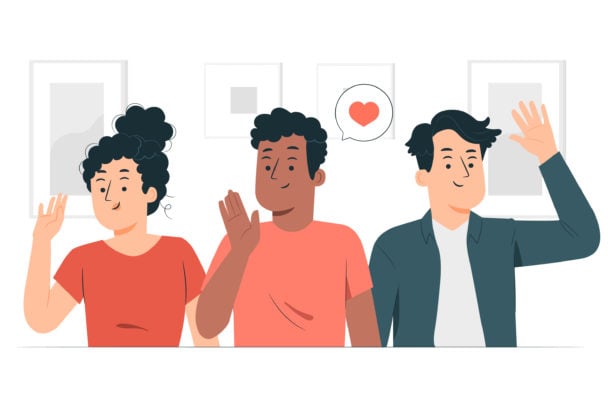
You’ve nurtured your leads, and now it’s time for the main event: turning those ebook readers into paying customers.
This is where all your hard work pays off.
Give Them a Clear Path Forward
Don’t leave your readers hanging. Give them a clear path forward.
- Put calls to action at natural points in the content. Don’t wait until the end. If you’re discussing a problem your product solves, that’s a great place to mention it. For example, if you’re talking about the challenges of social media scheduling, you could say, “Struggling with this? Our tool can help you schedule a month’s worth of content in just 30 minutes. Learn more here.”
- Use action words that match where the reader is in their journey. “Learn more,” “Get a demo,” “Start your free trial” – choose what makes sense for that ebook and that stage of the funnel. For a top-of-funnel ebook, “Discover more tips in our blog” might work well. For a bottom-of-funnel ebook, “Start your free trial now” could be more appropriate.
- Try different placements and designs to see what works best. Maybe a subtle text link works better than a big button. Test and find out. You could try a sidebar CTA, in-line text links, or even interactive elements like a quiz that leads to a product recommendation.
- Consider using progressive CTAs. If someone’s downloaded multiple ebooks, your CTA could be more direct, like “Ready to see how our tool can help? Book a demo now.”
- Make sure your CTAs are mobile-friendly. A lot of people read ebooks on their phones or tablets.
Offer Paid Products That Complement Your Ebook Content
Your ebooks have whetted their appetite. Now offer them the full meal.
- Recommend products or services that relate to what the ebook is about. If your ebook is about social media marketing, offer your social media management tool. You could say, “Love these strategies? Our tool can help you implement them in half the time.”
- Give special discounts to ebook readers. Make them feel like they’re getting an exclusive deal. It can be the nudge they need to make a purchase. Try something like, “As a thank you for reading our ebook, here’s 20% off your first month of [Product Name].”
- Create a series of ebooks that lead to a paid offering. Each ebook can tackle part of a problem, with your paid product as the complete solution. For example, you could have a series on “Mastering Email Marketing,” with your email automation tool as the ultimate solution.
- Offer a free trial or a freemium version of your product that relates to the ebook content. This lets readers experience the value firsthand.
- Consider creating a special bundle or package for ebook readers. This could include your product plus some exclusive bonuses.
Start Sales Conversations Based on Ebook Interactions
Use the data you have to make your outreach more relevant and timely.
- Have your sales team reach out when someone downloads a specific ebook. If it’s a bottom-of-funnel ebook, that reader might be ready to buy. The sales team could say, “Hi [Name], I saw you downloaded our guide on [Topic]. I’ve got some additional insights that might help you. Do you have 15 minutes to chat?”
- Use chat on your ebook landing pages to talk to readers right away. Answer their questions and guide them towards a purchase if it’s appropriate. You could start with, “Thanks for your interest in our ebook! While you’re waiting for the download, can I answer any questions about [Topic]?”
- Invite your most engaged readers to special webinars or demos. These can be great opportunities to showcase your product and answer questions. Make it exclusive: “You’re one of our most engaged readers, so we’d like to invite you to a special webinar…”
- Use retargeting ads to reach ebook readers with relevant offers. You could show ads for related products or services on social media or other websites they visit.
- Set up triggered emails based on specific ebook interactions. For example, if someone spends a lot of time on a particular chapter, send them a follow-up email with more information on that topic and how your product can help.
Pro tip: Create a scoring system for your leads based on their ebook interactions. Someone who’s downloaded multiple ebooks and opened all your emails is probably more sales-ready than someone who downloaded one ebook and never opened a follow-up email.
Measuring How Well Your Ebooks Are Working
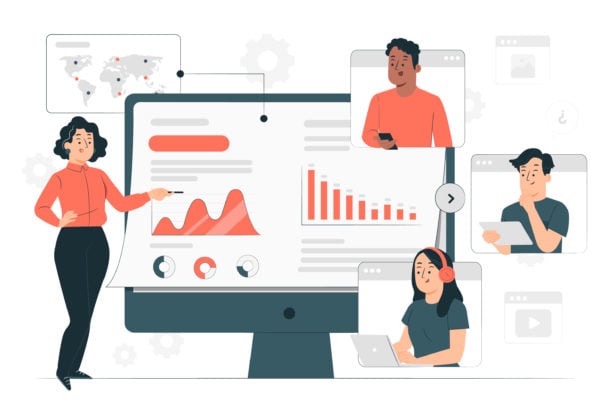
Let’s talk numbers. You’ve put all this work into your ebooks, but how do you know if they’re actually doing their job?
Here’s how to measure the impact of your ebooks on your sales funnel:
Track the Important Stuff
Data is your friend here. It tells you what’s working and what’s not.
- How many people download each ebook? This tells you which topics resonate most with your audience.
- How many people open and click links in your ebook-related emails? This shows how engaged your readers are after the download.
- How many ebook downloaders end up buying from you? This is the big one – it shows your ebook-to-customer conversion rate.
- How long does it take from ebook download to purchase? This helps you understand your sales cycle.
Read more on the most important Lead Magnet Metrics to Track.
Watch How Readers Move Through Your Funnel
Your ebooks should be moving people closer to a purchase decision.
- Use marketing tools to track each reader’s journey. See which ebooks they download, which emails they open, which pages they visit on your site.
- Figure out which ebooks are best at moving readers to the next stage. Maybe your “Beginner’s Guide” is great at turning strangers into leads, but your “Case Study Collection” is what really drives sales.
- Look for where people are dropping out and try to improve those areas. If lots of people download your ebook but never open your follow-up emails, you might need to work on your email subject lines.
Make Sure Your Ebooks Are Worth the Investment
Ebooks take time and resources to create. Make sure they’re paying off.
- Compare how much it costs to make an ebook to how much money it brings in. Include the time it takes to write, design, and promote the ebook.
- Think about the long-term value of customers you get through ebooks. If ebook readers tend to become loyal, long-term customers, that’s valuable.
- See if ebooks are helping you make sales faster. If they’re shortening your sales cycle, that’s a big win.
Pro tip: Don’t just look at the numbers in isolation. Compare your ebook metrics to your other marketing channels. Maybe your ebooks have a lower conversion rate than your webinars, but they might be reaching a much wider audience.
Taking Your Ebook Game to the Next Level
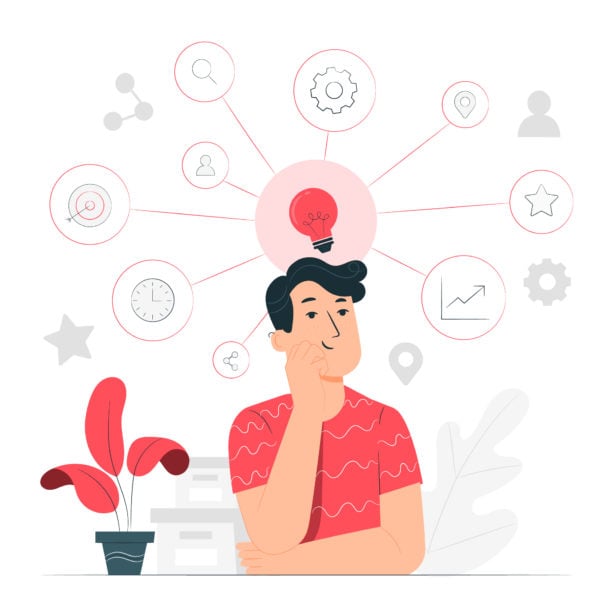
You’ve got your ebook sales funnel up and running. Awesome! But the work doesn’t stop there. The best marketers are always looking for ways to level up.
Here’s how you can take your ebook funnel from good to great:
Experiment Like a Mad Scientist
Small changes can make a big difference. Don’t be afraid to try new things.
- Play around with different titles, covers, and ways of organizing your content. Maybe a question-based title works better than a “how-to” title for your audience.
- Try out different types of download forms and calls to action. Would a two-step form work better than a single-step form? Only one way to find out!
- Test various follow-up email sequences. Try changing the number of emails, the content, the timing. See what gets people clicking.
Listen to Your Readers (They’re Pretty Smart)
Your readers are your best source of feedback. Pay attention to what they’re telling you.
- Ask readers how useful they find your ebooks. You could include a quick survey at the end of each ebook or in your follow-up emails.
- Keep an eye on comments and questions to see what’s missing from your content. If you keep getting the same questions, that’s a sign you should address that topic in your ebook.
- Keep your ebooks fresh with the latest info. Industries change, new technologies pop up. Make sure your ebooks stay relevant.
Make Sure Your Ebooks Match Your Business Goals
Your ebook strategy should evolve as your business does. Don’t let it get stale.
- Check if your ebooks still align with what your business needs. If you’ve launched a new product line, you might need new ebooks to support it.
- Create new ebooks to support new products or target markets. As you expand your business, grow your ebook library too.
- Update or retire ebooks that aren’t pulling their weight. Don’t be afraid to cut what’s not working and focus on what is.
Pro tip: Create a content calendar for your ebooks. Plan out what ebooks you’ll create, update, or retire over the next 6-12 months. This helps you stay proactive rather than reactive.
Get More Mileage Out of Your Content
You’ve put a ton of work into your ebooks. Why not make them work even harder for you?
- Turn that 50-page ebook into a series of blog posts. It’s a great way to get more eyes on your content.
- Use key points from your ebook as social media posts. Add a cool graphic and you’ve got shareable content.
- Transform your ebook into a webinar or video series. Some people prefer to watch rather than read.
- Create an email course based on your ebook content. It’s a great way to keep people engaged over time.
Wrapping It Up
Whew! We’ve covered a lot of ground here. Let’s do a quick recap of the key points:
- Ebooks can be powerful tools throughout your sales funnel, from catching people’s attention to closing deals.
- Match your ebooks to each stage of the buyer’s journey. Awareness, consideration, decision – each stage needs its own approach.
- Create ebooks that provide real value. Be helpful first, salesy second.
- Use smart lead capture strategies to turn ebook readers into leads.
- Nurture those leads with targeted follow-up content.
- Turn readers into customers by guiding them naturally towards your paid offerings.
- Measure everything. Use data to continuously improve your ebook strategy.
- Keep experimenting and refining your approach. What works today might not work tomorrow.
The secret sauce to success with ebooks? Always keep your reader in mind. What do they need? What problems are they trying to solve? How can you help them?
If you focus on providing value at every stage, you’ll not only get more leads but also build a group of informed and engaged customers who trust your expertise.
So, what’s your next move? Maybe it’s planning your first ebook, or taking a fresh look at your existing ones with these tips in mind. Whatever it is, remember: every great ebook starts with understanding your audience and aiming to help them.
Now go out there and create some killer ebooks! And hey, if you come up with something awesome using these tips, I’d love to hear about it. Happy writing!
Cut your eBook writing time! Check out Designrr’s special offer today.
